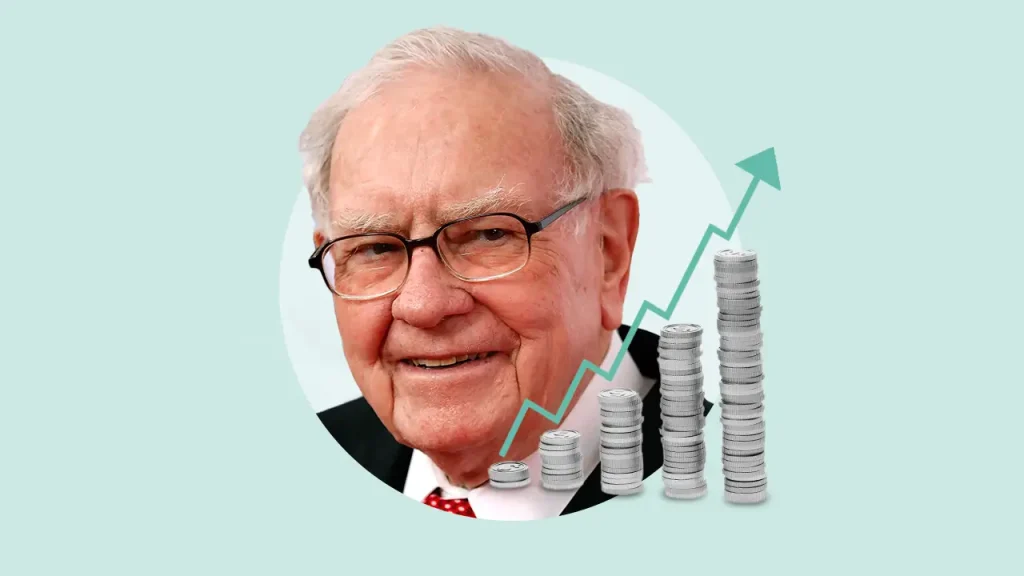Unlocking Success warren buffett portfolio: A Deep Dive into Warren Buffett’s Winning Portfolio Strategies

In the world of investing, few names resonate as powerfully as Warren Buffett. Known as the “Oracle of Omaha,” Buffett has built an extraordinary fortune through his astute portfolio strategies that blend patience, discipline, and an eye for value. His investment philosophy, rooted in deep analysis and unwavering commitment, offers invaluable lessons for both seasoned investors and novices alike.
As we embark on this deep dive into Warren Buffett’s winning portfolio strategies, we’ll uncover the secrets behind his success, exploring the principles that have guided him through market fluctuations and economic challenges. From his focus on long-term growth to his selective investment choices, this exploration will illuminate how you, too, can unlock success in your own investment journey. Whether you’re looking to enhance your financial acumen or simply gain insight into the mind of one of the world’s greatest investors, this analysis promises to inspire and enlighten.
Key Principles of Buffett’s Investment Strategy
Warren Buffett’s investment philosophy centers on value investing, long-term thinking, and rational decision-making. His approach, shaped by mentor Benjamin Graham, emphasizes buying undervalued companies with strong fundamentals and holding them indefinitely. Key principles include:
Focus on Intrinsic Value: Buffett prioritizes a company’s true worth over market price, using financial metrics like earnings, cash flow, and debt levels to assess value.
Margin of Safety: He buys stocks at a significant discount to intrinsic value to minimize risk.
Patience: Buffett avoids short-term trading, believing wealth grows exponentially over decades.
Management Quality: He invests in companies led by ethical, competent leaders aligned with shareholder interests.
Analyzing warren buffett portfolio: What Sets It Apart
Buffett’s portfolio is unique for its concentration, resilience, and sector diversity. As of 2023, his top holdings included Apple (50.19%), Bank of America, and Coca-Cola. Key traits:
Long-Term Holdings: Coca-Cola (held since 1988) and American Express (1993) highlight his buy-and-hold discipline.
Sector Agnosticism: He invests in tech (Apple), finance (Bank of America), and consumer staples (Coca-Cola), focusing on quality over trends.
Cash Reserves: Berkshire Hathaway held $189 billion in cash by March 2024, allowing flexibility during market downturns.
warren buffett portfolio:The Importance of Value Investing
Value investing—buying undervalued stocks—remains Buffett’s cornerstone strategy. It involves:
Fundamental Analysis: Studying financial statements to identify companies trading below intrinsic value.
Contrarian Mindset: Buying during market pessimism, as seen in his 2020 pandemic-era investments.
Historical Success: From 2020–2021, undervalued stocks like Moderna surged 343%, validating the approach.
warren buffett portfolio:Understanding the Concept of Economic Moats
An economic moat refers to a company’s sustainable competitive advantage. Buffett seeks businesses with:
Brand Power: Coca-Cola’s global recognition.
Cost Leadership: Walmart’s supply chain efficiency.
Network Effects: Meta’s social media dominance.
Regulatory Barriers: Utility companies protected by licensing.
These moats ensure long-term profitability and market share retention.
Buffett’s Approach to Risk Management
Buffett mitigates risk through:
Concentration: Holding fewer stocks to deeply understand each business.
Margin of Safety: Buying undervalued assets to buffer against errors.
Avoiding Debt: Prioritizing companies with low leverage.
Cash Reserves: Maintaining liquidity to capitalize on crises, as seen in 2024’s $300 billion cash pile.
Case Studies: Successful Investments from warren buffett portfolio
1. Apple: Despite trimming shares in 2024, Apple remains Berkshire’s largest holding, driven by its ecosystem and recurring revenue.
2. Coca-Cola: A 35-year investment yielding consistent dividends and brand loyalty.
3. Occidental Petroleum: Acquired during energy sector weakness, aligning with Buffett’s “buy fear” mantra.
Lessons Learned from Buffett’s Investment Mistakes
Buffett’s missteps offer critical insights:
IBM (2011–2018): Overestimating tech moats led to losses; he now avoids businesses with rapid obsolescence risks.
Airline Stocks (2020): Sold during COVID-19, admitting he misjudged industry volatility.
ConocoPhillips (2008): Buying during peak oil prices highlighted timing risks.
These errors reinforce his mantra: *“Never lose money”* through rigorous due diligence.
How to Apply Buffett’s Strategies to Your Own Portfolio
1. Invest in Understandable Businesses: Avoid complex industries outside your expertise.
2. Prioritize Quality: Seek companies with strong moats, low debt, and consistent earnings.
3. Be Patient: Hold stocks for decades, ignoring short-term noise.
4. Diversify Cautiously: Balance high-conviction picks with ETFs (e.g., S&P 500) for stability.
5. Stay Liquid: Keep cash reserves to exploit market dips.
Conclusion: Embracing the Buffett Mindset for Financial Success
Buffett’s success stems from discipline, patience, and a relentless focus on value. By adopting his principles—investing in moat-protected businesses, managing risk through margin of safety, and thinking long-term—investors can build resilient portfolios. As he advises: *“Be fearful when others are greedy, and greedy when others are fearful”*. In an era of market volatility, his timeless strategies remain a blueprint for sustainable wealth creation.